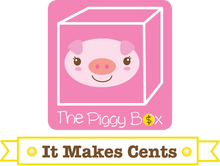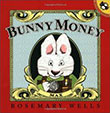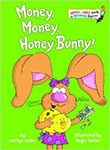Parents and Teacher: Teaching Money and Personal Finance
"Please read me a story," kids often ask. Parents who say yes know that reading to their children helps them in many ways and opens up the opportunity to talk about or teach important ideas. Choose one of these books and print our one-page parent Q&A to go with it. You'll be able to have a conversation with your children about saving, spending, savings goals, making careful decisions, and many other personal finance and economics concepts that relate to their everyday lives.
Teachers: Lesson plans are included for most of the Q&A books.
Related: Watch a short video as 3- and 4-year-olds get a taste of personal finance education, and see what parents have to say about starting so young.

A Chair for My Mother Q&A
Concepts: human resources, income, saving, and savings goal.
For children 5 to 7 years old.

Alexander, Who Used to Be Rich Last Sunday Q&A
Concepts: opportunity cost, saving, savings goal, and spending.
For children 5 to 7 years old.
![]()
Because of Winn-Dixie Q&A
Concepts: goods, employee, employer, income, installment plan, job, money, and services.
For children 8 to 11 years old.
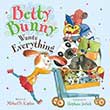
Betty Bunny Wants Everything Q&A
Concepts: choice, scarcity, and wants.
For children 3 to 7 years old.
This book is also used in Kiddynomics: An Economics Curriculum for Young Learners.
![]()
Curious George Saves His Pennies Q&A
Concepts: saving, savings goal, earning income, and gift money.
For children 5 to 7 years old.
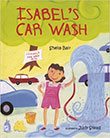
Isabel's Car Wash Q&A
Concepts: dividend, entrepreneur, investor, profit, revenue, risk, and tax.
For children 8 to 11 years old.
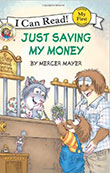
Just Saving My Money Q&A
Concepts: saving, savings goal, bank, and income.
For children 3 to 7 years old.
This book is also used in Kiddynomics: An Economics Curriculum for Young Learners.
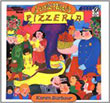
Little Nino's Pizzeria Q&A
Concepts: goods, services, capital resources, human resources, intermediate goods, and natural resources.
For children 5 to 7 years old.
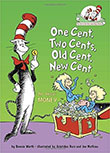
One Cent, Two Cents, Old Cent, New Cent: All About Money Q&A
Concepts: barter, characteristics of money, interest, and money.
For children 7 to 10 years old.
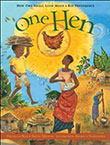
One Hen: How One Small Loan Made a Big Difference Q&A
Concepts: entrepreneur, loan, and saving.
For children 8 to 10 years old.
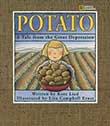
Potato: A Tale from the Great Depression Q&A
Concepts: barter, consumers, goods, services, income, and wants.
For children 7 to 9 years old.
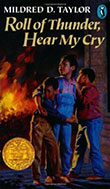
Roll of Thunder, Hear My Cry Q&A
Concepts: mortgage, note, and collateral.
For children 10 to 13 years old.
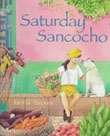
Saturday Sancocho Q&A
Concepts: bartering, coincidence of wants, exchange, and money.
For children 8 to 10 years old.

Sky Boys: How They Built the Empire State Building Q&A
Concepts: human capital, human resources, productivity, and physical capital.
For children 7 to 10 years old.

Something Special for Me Q&A
Concepts: saving, savings, and opportunity cost.
For children 5 to 7 years old.
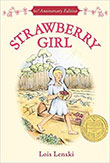
Strawberry Girl Q&A
Concepts: benefits, capital resources, choices, decisionmaking, human capital, human resources, income, labor, natural resources, and property rights.
For children 8 to 12 years old.
![]()
The Berenstain Bears' Mad, Mad, Mad Toy Craze Q&A
Concepts: consumers, goods, price, and sellers.
For children 5 to 7 years old.
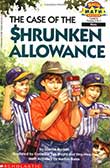
The Case of the Shrunken Allowance Q&A
Concepts: bank, income, interest, saving, and spending.
For children 8 to 10 years old.
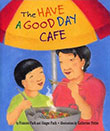
The Have a Good Day Cafe Q&A
Concepts: advertising, consumers, goods, and services.
For children 5 to 7 years old.

The Pickle Patch Bathtub Q&A
Concepts: opportunity cost, saving, savings goal, and savings plan.
For children 5 to 7 years old.

The Tortilla Factory Q&A
Concepts: natural resources, human resources, capital resources, and intermediate goods.
For children 8 to 10 years old.
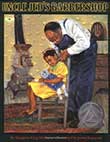
Uncle Jed's Barbershop Q&A
Concepts: bank failure, opportunity cost, saving, savings goal, and segregation.
For children 7 to 10 years old.
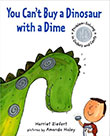
You Can't Buy a Dinosaur With a Dime Q&A
Concepts: saving and spending.
For children 5 to 8 years old.
More resources for parents:
Econ Lowdown resources can help your Boy Scout earn the Personal Management merit badge, one of the requirements to become an Eagle Scout. Several Econ Lowdown video segments are included in the online booklet for Scouts to earn the Personal Management merit badge.
---
If you have difficulty accessing this content due to a disability, please contact us at 314-444-4662 or economiceducation@stls.frb.org.
Search for Related Resources
Audience: Consumers, Elementary SchoolLanguage: English
Subjects: Economics, Personal Finance, Literature
Resource Types: Activity, Resources for Parents, Series
